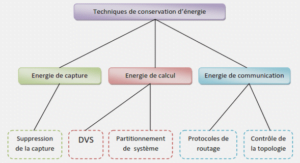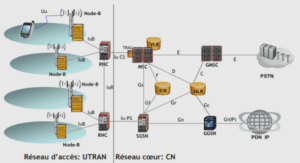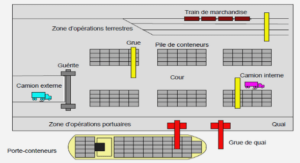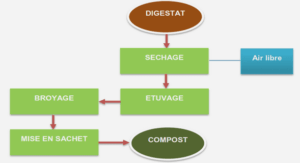THE DEVELOPMENT OF DEPTH IMAGING METHOD BASED ON SPECTRUM ANALYSIS
Power spectrum aualysis for complex models:
Magnet.ic field is continuous in time and space Through the Fourier transfonn, we approximate magnetic field by a periodic function, and then discrete it into Fourier series. The coefficients of Fourier series represent the intensities of susceptibilities or magnetizations at different frequencies at each station. Sin ce they are complex amplib.Jdes in the frequency domain, we cali them as frequency spectrum Ccmplex calculation reduces the difficulty of integration operation in sp ace. Even a swvey station only re fers to one data (a value measured for one survey station), it contains also the contribution from sources under other stnvey stations around the observed point along a swvey line. Therefore, we use a window mcwing from one station to another to scan magnetic anomalies, by assurning that major magnetic ancmaly sources are located within the window width. Data /;(x) are observations in the i r. window. After the Fourier transforrn of data j,(x) we obtain F;(k) which is a set of complex amplitudes corresponding to different frequencies at one survey station (P) After processing N-times the same process is repeated at each survey station.
One of the key questions is how to select the optimal width of window in STFT. In Figure 2.8, we hypothesize that main magnetic anomaly source is undemeath the point P’, and its response is mainly inside of the interval [a, b]. Therefore, the width of window must be enough big to include the entire main anomaly (red window). For example, the blue window, whose width is w2 , is not good because it cuts off part of data of the main response at survey station P’. At survey station Q’, the blue window is better than the red window because the red window includes more than one anomaly, which makes the interpretation more complicate. The resolution of the STFT is thus windowing function dependent. A wide window corresponds to better frequency resolution but poor time resolution (or space resolution in spatial domain). A narrower window corresponds to good time resolution (space resolution in spatial domain) but poor frequency resolution. It determines whether there is good frequency resolution (frequency components close together can be separated) or good time resolution (the time at which frequencies change). WT (Wavelet Transform; Morlet, 1982; Chui, Charles K., 1992) and ST (S Transform; Stockwell R.G., Mansinha L., Lowe R.P., 1996; Stockwell, 1999), whose wavelet basis functions can adaptively reduce width of window as increasing frequency, are used for transforming the space-domain data into the space-wavenumber-domain data. Due to limited time, we only used STFT in our calculation.
In the following, we use two and three sphere models (Figure 2.9a1 and 2.9a2) to present a more complex situation as shown in Figure 2.9 (upper panel). The X-axis represents the survey line and units are in meter. The magnetic field inclination is rr!2 and its azimuth is also rr!2, the magnetic susceptibility of all five spheres is 0.2 SI, the magnetic field strength is 50000nT and other geometrie parameters are indicated in Figure 2.9a1 and 2.9a2. The width ofwindow function is 32 data points in STFT.
Through the power spectrum analysis (Figure 2.9b1 and 2.9b2), two different horizontal sources can be clearly distinguished at (0, 0) and (150, 0) respectively. Analyzing Figure 2.9b2, it shows that the anomaly at location (0, 0) is deeper than the one at location (150, 0) because the anomaly is broader and also because it is associated with a small wave number, which is consistent with the models. The power spectrum of Figure 2.9b1 shows that there is a shallow source at location (0, 0) and that there is at least one deep source below due to the opening downward anomaly in small wave-number band. Accordingto Figure 2.10b 1, we might also think that it is a vertical elongated body or a vertical superposition of more than one magnetic body underneath location (0, 0), but in all cases, the possibility to indicate the existence of sources is taken into account.
Analysis of noise and the Gibbs phenomenon:
Noise analysis:
For the survey data in field, they are al ways affected by different types of noises, such as geological noise, random noise and human noise. We made two types of noises to analyze their impact on our method: random noises distributed uniformly and white Gaussian noises (WGN) (Kevin McClaning, et al. 2000) with different variances.
White Gaussian noise (WGN):
A series of white Gaussian noises, which have the same average values of zero and different variances, are added to the magnetic anomalies to analyze their impact. The White Gaussian noises are constructed as following,
N0 =NO* MAX(abs(S))* NSR%
Where, s represents one of the signais ( sl’ s2 ), MAX(abs(S)) represents the maximum ofthe absolute values of signal S, NSR is the noise-signal ratio of random(O, 1) to MAX(abs(S)). NO represents the white Gaussian noise with the variance of 1, N 0 represents the white Gaussian n01se with specifie vanances of (MAX (abs(S)) * NSR% )2
We also find the same principle with the impact of random noise on signal. The impact of WGN on the component with smaller wavenumber is less than that with bigger wavenumber, and this impact is more serious than that of random noise. Also for the peer noise-signal ratio, the impact of WGN on shallow sphere is much more than that on deep sphere. But for White Gaussian noise, there is no DC component due to than the average value of WGN equals to zero. When the noise-signal ratio is more than 8%, we even can ‘t distinguish the spectrum of FFT for shallow sources.
Gibbs phenomenon and the choice of smooth win dow:
An overshoot at the discontinuity occurs when using a Fourier series approximates a signal with a jump discontinuity, and this overshoot does not die out as the frequency increases. This phenomenon was noticed by A. Michelson (1898) and proposed by Gibbs (1899). Often we should consider a smooth window to smooth the discontinuous points. In order to get proper window functions, we studied a series of window functions to smooth the data to zeros and study their impact on signal, including Gaussian window, Blackman window, Hamming window, Hanning window and Bartlett window.
In our case, the signal used is the magnetic response ofthe deep sphere 2 in the section 2.6 of Chapter II, and add a constant signal with zero frequency to the signal in order to get the jump at the ends of the signal as shown in Figure 2.26. Using a series ofwindow functions smooth the signal, we can get the spectrum of Fourier transform about original signais and the signal smoothed as shown in Figure 2.27 to 2.31.
Due to the jump discontinuity at the ends of signal, the Gibbs phenomenon is very serious as shown in the following figures. By using windows to smooth the signal (first applying windows on the survey data, and then computing the spectrum), the spectra (red curves) are much better than that of original signal (blue curves). For the same sampling points, the power spectrum processed from the signal which is smoothed to zero by Gaussian window, Hamming window and Bartlett window are better than the Hanning and Blackman windows. For the same smooth window, a better spectrum can be obtained as the number of sampling points for smooth window increases. For the Gaussian window, as standard deviation ofthe Gaussian function increases, the spectrum become better as shown in Figure 2.27. The principle to choose a smooth window is that enough number of sampling points and adjusting the parameters of window function make the window function smoother to zero. Also the sampling points of window function do not be countless so that it affects the computing speed.
Modeling test:
We applied the new method to 5 synthetic models. The magnetic permeability offree space is 4n:x 10·7 Hm-1 and the magnetic field strength is 50000nT. The different geometrie parameters are shown in each model.
From this model we show: since the amplitude of magnetic anomaly 1s inversely proportional to the cube of the distance between the source and the observation point, its power spectrum has low value. As shown in Figures 2.34a to 2.34d, we can define the horizontal position of the anomaly body exactly as the models designed. However, in the z-downward direction, we see a sphere-like spectrum anomal y on the top of another larger power spectrum. As width of window function increases, it becomes thicker, but dip extent almost do not changes. That’s reasonable because increasing width of window function makes imaging data of many adjacent survey stations contain major same frequencies and power spectral. According to the usual shape of the spectrum of spheres ( centered and closed), the top power spectrum of the model 3 indicates that there is another deep source, which has a different geometry from a sphere or a cylinder. We can see that the top power spectrum (Figures 34a to 2.34d) very well defines the depth ofthe cylinder (50m), and that the discontinuity depth ofthe Power spectrum (also the top of the larger spectmm) corresponds to the center depth of the prism (1 OOm), which is consistent with Model3.
Problem of equivalent source:
The problem of equivalent source is well known in potential field data interpretation. However, we need to distinguish between two types of equivalent source: equivalent surfaces and equivalent bodies.
Equivalent surface or layer
Applying the equivalent source principle to potential field data processing was firstly discussed by Dampney (1969). As he mentioned in his paper: ‘Bouguer anomaly measurements on an irregular grid and at a variety of elevations can be synthesized by an equivalent source of discrete point masses on a plane of arbitrary depth below the surface’. Subsequently, several techniques had been developed for first and second vertical derivation, upward- and downwardcontinuation, and directional derivation of the potential field (Needham, 1970; Emilia, 1973; Codell, 1992; Cooper, 2004; Li and Oldenburg, 2010; Kara et al. , 2014, references therein). We reproduced such equivalent source through several examples (Figures 2.38a, 2.38b, 2.38c, 2.38d), which demonstrate that those equivalent sources are meaningless about the structural geology. The true mo del in Figure 2.3 8 is a magnetic cylinder. The center depth of the cylinder is 250m with magnetic susceptibility of0.2SI, and its radius is 100m. Four groups of point sources located on a magnetic layer and they produced perfectly the cylinder’s anomaly, but the susceptibility is different for each point source.
CONCLUSION:
We studied the characteristics of the Power spectrum of magnetic field anomalies in the frequency domain and found that the spectrum ofthe anomaly is correlated with the depth of the source of the anomaly. We deduced a mathematical formula to express the relation between the depth and the wave number for a simple magnetic body. We extended this formula to a general situation and got a depth imaging method to interpret magnetic data in term of distribution of sources.
|
Table des matières
CHAPTER 1 INTRODUCTION
1.1 Magnetic field
1.2 Methodological development and research hypotheses
1.3 Objectives
CHAPTER2 THE DEVELOPMENT OF DEPTH IMAGING METHOD BASED ON SPECTRUM ANALYSIS
2.1 Magnetic anomal y of a sphere mo del
2.2 Power spectrum analysis of single or multiple spheres
2.3 Magnetic anomal y of a thick prism mo del
2.4 The relationship between wave-number and depth
2.5 Power spectrum analysis for complex models
2.6 Analysis of noise and the Gibbs phenomenon
2. 6.1 Noise analysis
2. 6.2 Gibbs phenomenon and the choice ofsmooth window
2.7 Modeling test
2.8 Problem of equivalent source
2.8.1 Equivalent surface or layer
2. 8. 2 Equivalent bodies
CHAPTER3 CASE STUDY
3.1 Geology of the Galien Volcanogenic Massive Sulfide Deposit
3.2 Magnetic data description
3.3 Data processing results and interpretation .
CONCLUSION
![]() Télécharger le rapport complet
Télécharger le rapport complet






